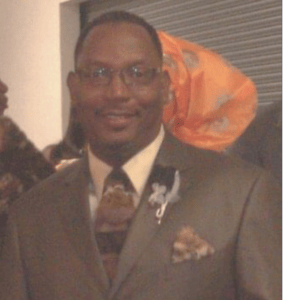The African Apostle Paul wrote in Romans 5:4, “Suffering produces endurance, and endurance produces character, and character produces hope, and hope does not disappoint us…”
In this final installment of the Hope Series, I would like to turn your attention to Chapter 16 of the Gospel of Mark. But before I address the text of Mark, please remember that the word “gospel” is the Old English translation of the Hellenistic Greek term for “good news.”
The gospels of Matthew, Mark, Luke and John therefore are the good news about that African liberator from Palestine, Jesus the Christ of Nazareth. And Jesus said in Luke 4 that He was anointed by the spirit of the Lord to bring “Good News,” to the poor. The mission of Jesus, according to the late Howard Thurman in his classic book “Jesus and the Disinherited,” “is a technique of survival for the oppressed.”
My reason for providing background before I share the breakdown is to identify to whom this good news is particularly targeted, and that is the poor, disinherited and marginalized.
Thus, in Mark Chapter 16, verses one through eight, Mark shares that the women were on their way to the tomb where Jesus was laid after being executed by the imperial empire of Rome and its domineering system of oppressing the poor of Northeast Africa. What may shock some is that the Gospel of Mark originally ended at the eighth verse. Verses nine through twenty were added later, but the original ending of Mark’s gospel stopped at the eighth verse.
What you learn in verses one through eight is that when the women get to the tomb, they first find the large stone covering the opening had been rolled away. Next when they enter, they find a young man dressed in a white robe sitting on the right side. This young man is thought to be an angel, but Mark does not make it clear. The young man or angel tells the women, Jesus “is not here, he has been raised…” but “go tell his disciples and Peter to meet him in Galilee just as he told you.”
The women leave the tomb, the text says, with both “terror and amazement.” But the text also says, they “Said nothing to anyone, for they were afraid.” Now we know, and Mark knew, the women would eventually tell this good news to someone but for that moment the matter is left open.
Mark leaves the matter of the Resurrection open for those who out of Hope will meet Jesus in Galilee to begin the new phase of the movement of Jesus. That new phase would put into a larger practice the example of Jesus when he walked among them in the flesh.
The poor Jesus encountered were healed of any illness or sickness or disability without cost. The peasant people Jesus moved among were fed to the full without having to pay for it, and the religious restrictions that were imposed upon the oppressed by the religious elite were ignored and discounted by Jesus, who broke religious and social barriers to include those excluded. In fact, Jesus leveled his most vitriolic attacks upon the religious aristocracy of Israel for imposing unreasonable and unrealistic burdens on the poor.
Mark’s original ending of his gospel is a challenge to his readers then and his readers today. His gospel and its original ending does not provide a “happy ending,” per se. It does not end with a resurrection appearance to the disciples. The ending leaves open the challenge to hope.
What is the hope in an ending that does not end with a resurrection appearance? The hope is in the empty tomb. But in order to realize that hope, it requires the faithfulness to his mission and movement to meet him where it all began in order to build the society of equity in the distribution of resources, and where the justice and righteousness of God’s total sufficiency will create a society where “the last will be first and first will be last.”
The hope is that the tomb was empty and that hope must move people who say they believe, to become engaged in the work of creating a healing, whole and compassionate society where everybody has enough of what they need.
The women leave the tomb with both “terror and amazement,” because of how monumental that moment was to them. They seem to sense that this is in the words of biblical scholar Emerson B. Powery, “the beginning of something new, a newness that will require mutual effort, from all available intellectual, spiritual, economic, cultural and other socioeconomic resources…”
The hope of Easter or, if you prefer, Resurrection Sunday, is that the tomb was empty, therefore it is a signal that the work to build the world where God’s love and justice are the standard of the day begins right after Easter and right where you are in your home, neighborhood, community, city and society. And leading that effort are those who have been most deprived and affected by resource deprivation because of the greed of the wealthy.
The African Apostle Paul wrote also in Romans, “For in hope we were saved. Now hope that is seen is not hope. For who hopes for what is seen? But if we hope for what we do not see, we wait (work) for it with patience (steadily building).”
That’s why I’m so glad the tomb was empty!!!

Rev. Dr. John E. Jackson, Sr. is the Senior Pastor of Trinity United Church of Christ-Gary, 1276 W. 20th Ave. in Gary. “We are not just another church but we are a culturally conscious, Christ-centered church, committed to the community; we are unashamedly Black and unapologetically Christian.” Contact the church by email at [email protected] or by phone at 219-944-0500.





